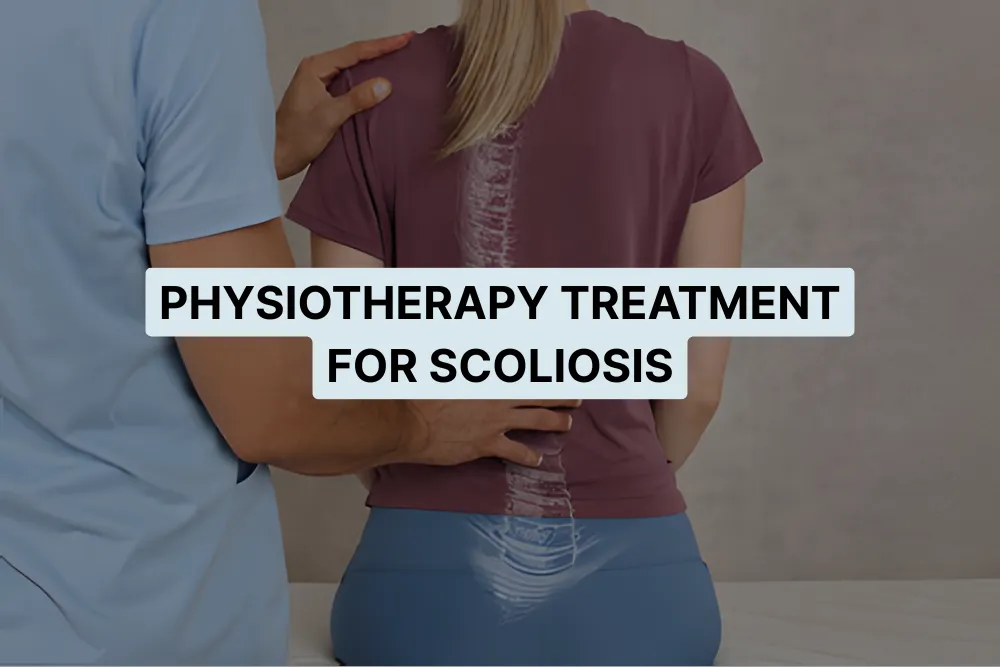You’ve noticed it for a while now, one shoulder sits slightly higher than the other, your clothes never seem to hang quite right, and that nagging backache has become your constant companion. Maybe you avoid certain movements because you know they’ll trigger discomfort, or perhaps you’ve become self-conscious about how you stand. If you’re living with scoliosis, these everyday struggles are all too familiar. But here’s the encouraging news: you don’t have to simply accept these challenges. Physiotherapy offers a proven, non-invasive pathway to managing scoliosis, reducing pain, and reclaiming your confidence and comfort.
Understanding When Physiotherapy Is Right for You
Treatment for scoliosis isn’t necessary for all cases. Your healthcare provider will carefully evaluate several important factors before recommending a treatment plan, including:
- The type of scoliosis – Whether it’s idiopathic, congenital, or neuromuscular
- The degree of the curve – Typically measured by the Cobb angle
- Your age – The number of remaining growth years until skeletal maturity
- Your family history of scoliosis
- Your symptoms – Pain levels, mobility limitations, and impact on daily life
Physiotherapy is often recommended for mild to moderate curves (typically 10-40 degrees) and can be highly effective for both preventing curve progression in adolescents and managing pain and function in adults.
Physiotherapy Techniques for Scoliosis Management
Physiotherapy for scoliosis is a comprehensive, evidence-based approach that addresses the three-dimensional nature of spinal curvature. Your physical therapist will create a personalized treatment plan using various specialized techniques.
The Schroth Method
The Schroth Method is one of the most respected approaches to scoliosis-specific physiotherapy. This specialized technique recognizes that scoliosis is a three-dimensional deformity involving rotation and lateral deviation. Through curve-specific exercises and rotational angular breathing, you’ll learn to address your unique spinal pattern. Many patients find that mastering Schroth exercises not only improves their spinal alignment but also relieves chronic muscle tension and discomfort.
Postural Training and Correction
Your posture plays a fundamental role in managing scoliosis. Through mirror feedback exercises and proprioceptive training, you’ll develop an internal sense of proper alignment. Your therapist will also provide ergonomic education for your workspace, helping you maintain healthy spinal positioning throughout the day. Improving your posture reduces strain on your spine and significantly decreases pain in your neck, shoulders, and lower back.
Strengthening and Stretching Exercises
The spinal curve creates muscular imbalances that contribute to pain and dysfunction. Your physiotherapy program will include:
- Core strengthening
- Stretching
- Low-impact exercises
Manual Therapy for Pain Relief
When pain flares up or certain areas feel particularly tight, manual therapy provides targeted relief. Your physiotherapist uses hands-on techniques including:
- Soft tissue mobilization to release knotted, painful muscles and provide relief from acute pain episodes
- Joint mobilization to restore mobility and reduce stiffness in your spine
- Myofascial release to address deeper restrictions causing persistent pain
Breathing Exercises
For those with thoracic curves, scoliosis can compress the rib cage and reduce lung capacity. Respiratory muscle training helps you maximize breathing efficiency, expand restricted areas, and reduce chest tightness.
Physical Activity and Lifestyle Guidance
Your physical therapist will provide personalized recommendations for safe exercise modifications, sport-specific advice, and daily activity planning. Even adjustments to your sleeping position can significantly reduce morning pain and improve overall comfort.
Tracking Your Progress: Before and After Measurements
One of the most motivating aspects of physiotherapy is seeing tangible evidence of your improvement.
Initial Assessment
Your treatment begins with a comprehensive evaluation including postural analysis, range of motion testing, muscle strength assessment, pain level documentation, and functional limitations. Many clinics also take photographs from multiple angles for visual tracking.
Ongoing Monitoring
Typically every four to eight weeks, you’ll undergo reassessment to measure improvements and adjust your treatment plan. Your therapist tracks:
- Posture and alignment improvements
- Curve stabilization or reduction
- Increased muscle strength and flexibility
- Pain reduction
- Enhanced functional abilities
- Quality of life improvements
What You Can Expect
With consistent physiotherapy treatment, you can expect stabilized or reduced curve progression, improved posture with reduced asymmetry, and decreased pain levels (often significantly). You’ll also experience increased strength, endurance, and flexibility, along with better breathing capacity. Most importantly, you’ll gain enhanced confidence and the ability to participate in activities you value.
Take Control of Your Scoliosis Journey Today
Living with scoliosis presents real challenges, but physiotherapy offers a proven, personalized approach to managing your condition.
At Physioveda Medical Center, our experienced physiotherapists specialize in comprehensive scoliosis treatment in Dubai. We create personalized treatment plans tailored to your unique curve pattern, symptoms, and life goals. Using evidence-based approaches including the Schroth Method, targeted strengthening exercises, and manual therapy techniques, we help you achieve the best possible outcomes.
From your initial comprehensive assessment through ongoing support and progress monitoring, we’re with you every step of the way.

Amit Saraswat is the Founder of Physioveda Medical Center, a Dubai-based clinic focused on personalized physiotherapy and integrative healthcare. With a passion for patient-centric solutions, he leads the vision behind Physioveda’s evidence-based approach to pain relief and long-term recovery.

